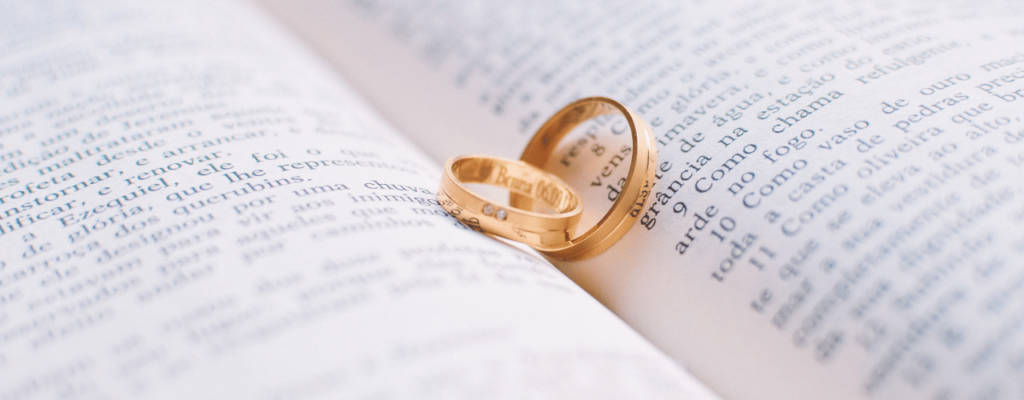Our Way or God’s Way?

Finding Harmony in the Catholic Wedding Vows
We often find ourselves chatting with engaged couples who want to write their own wedding vows. They tell us the traditional language feels stiff or too generic, and we get it—their love is unique, and they want their words to reflect that. It’s entirely understandable, and it reminds us of what we were thinking when we were preparing for our marriage.
However, this well-meaning desire often runs head on into an important reality; that for a marriage to be valid in the Catholic Church, we must use an approved version of the vows – what is called ‘the correct form.’ Stray too far from these, and our marriage might not be considered valid in the Church’s eyes.
This might seem unreasonable but upon reflection there is both depth and beauty in the vows of the Church. When we speak these time-honoured words, we join countless couples across history, linking our simple promises to God’s eternal covenant.
The Ceremony Unpacked
In essence, there are three sections to the Celebration of Matrimony in the Catholic tradition.
- Following an introductory prayer, three Questions before Consent are directed to the bride and groom by the celebrant. These questions establish that … they are freely presenting for marriage; they intend to live as husband and wife for the duration of their life; and they are open to gift of children who they will raise as Christians.
- The second part is the Consent. There are two versions approved in English – traditional or contemporary wording. Both versions express the couple’s decision to enter marriage, to endure in diverse circumstances, for as long as they both live. It can be read, memorised, or affirmed with “I do” when phrased as a question by the celebrant. We encourage couples to memorize these words as there’s something powerful in knowing them by heart. But we’re practical too: keep a copy handy, just in case nervousness interferes with your recall on the day!
- After a short prayer by the Celebrant (Reception of Consent), the rings and blessed and given. The Celebration of Matrimony concludes with the Nuptial Blessing and the Signing of the Register.
Going deeper into the Vows
At first glance, the words of consent might feel generic or outdated, but we encourage couples to take a second look and dig deeper. Take a line like ‘in good times and in bad.’ It’s easy to picture the good times, but what happens when one of us is soaring and the other struggling? How do we hold space for each other in that situation?
We’ve seen couples sit with these questions, scribbling their own meanings – maybe recalling a tough situation they weathered together or a quiet victory they shared. Suddenly, those ‘generic’ vows become a shorthand for their story, packed with the weight of their love history.
We saw this play out beautifully just last week. Our son and his bride stood before us in a traditional Catholic ceremony. Although our ‘daughter-in-love’ is not a Catholic, they prepared the ceremony with great attention to detail, in a beautiful, dignified ceremony.
Later, in a quiet moment with family and the bridal party, they shared individual promises that brought those formal vows to life in a unique and personal expression. Seeing how seriously they’d taken their vows was very moving.
It was not that one exchange was better than the other. Their private promises were a personalised addendum to the unconditional commitment they had just made more publicly in the wedding ceremony.
They showed us that ‘God’s way’ and ‘our way’ don’t have to clash. With a little reflection and planning, we can honour the timeless vows of the Church and still let our unique love shine.




